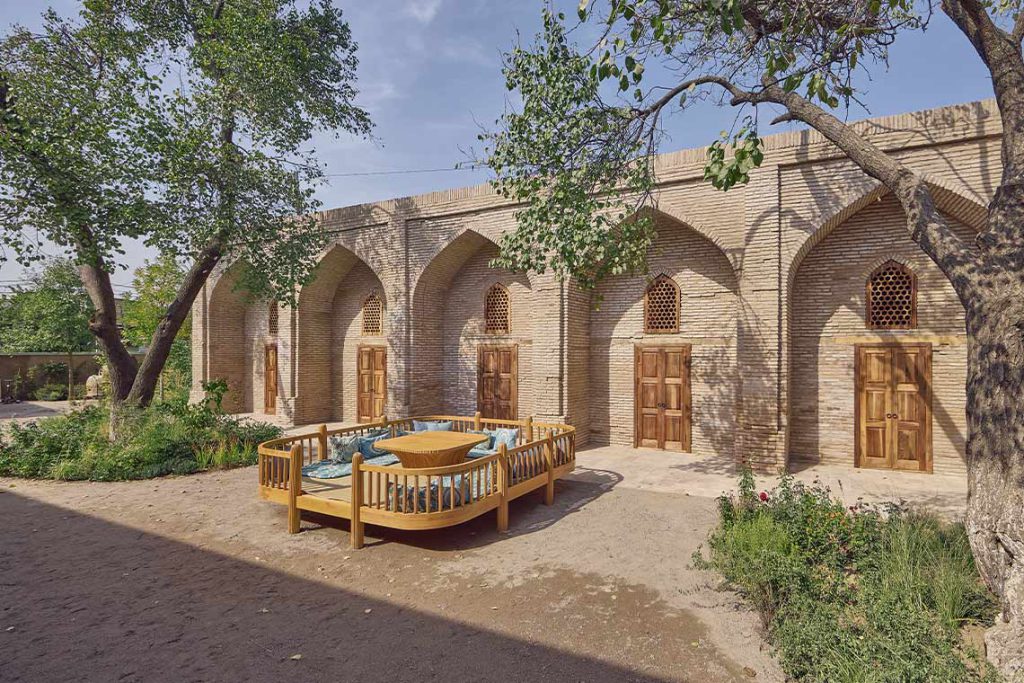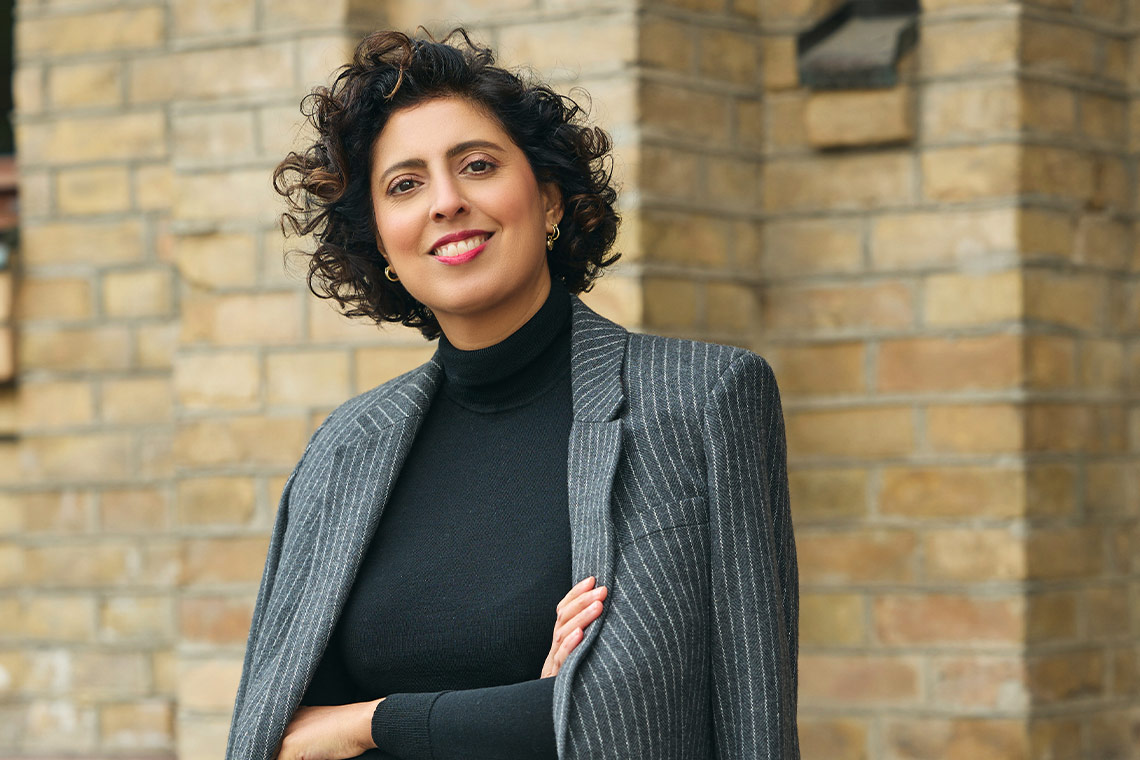The curator at the helm of the Centre for Contemporary Arts (CCA) in Tashkent reveals how Uzbekistan’s cultural scene is expanding and becoming increasingly accessible.
Canvas: Uzbekistan has a unique dynamic between contemporary creation and craft. How can the art discourse benefit from this relationship?
Sara Raza: There’s a long and revered history in Uzbekistan of celebrating and elevating craftsmen. Rulers like Amir Timur invited craftsmen and artists from all over the Islamic world and great respect was shown to artisans working in woodwork, metalwork, traditional sculpture and the fine arts. The Soviet period saw the introduction of more plastic arts like painting and film, as well as state universities that specialised in these disciplines. Art and visual culture have always been embedded in the local culture, but there used to be a separation between craft and fine art. These categories are becoming much more malleable now, which is why what’s happening in Uzbekistan is so interesting.
What are the particular issues for the CCA to consider?
We’re going through a different assessment of modernity and what it means to be contemporary. When you look at the West, it’s a very vertical understanding of what is modern and what is postmodern. Countries or regions that have experienced interruptions such as revolution, governmental collapse or entire regime change, like Uzbekistan for example, cannot be measured on the same timeline. There also has to be awareness of the very dynamic young generation in Uzbekistan – more than half the population is under 30. There is a really interesting intergenerational shift and we need to look at what the next generation is doing and how to integrate them. They’re grappling with changes in technology and in the art world and its structures. Everything is becoming much more accessible and there’s also more focus on diversity. I’m excited to see how that’s going to play out.
Who are some Uzbek artists to look out for right now?
I have worked with artist Vyacheslav Akhunov, an older generation artist who lives and works in Tashkent and whom I met in 2005 when working in Bishkek, Kyrgyzstan. I am also very excited about the Rakhimov Studio, three generations of potters who have revived ceramics in new and unexpected ways. There are also several other younger groups and collectives that are emerging. Photographer Hassan Kurbanbaev and cultural practitioner Misha Kuzhel run the Invisible Island Studio. I’m really excited about what they’re doing, it’s really fresh in terms of studio practice and publishing. There are further pockets of creativity across other disciplines, such as fashion, which are doing important work and contributing to visual cultural knowledge.
The CCA has already inaugurated a programme of residencies. What else is coming?
The CCA residencies were launched in January this year and there is a synergy with the work that the Centre itself will undertake, although we are sisters and not twins. Residencies are part of a process to think about the artist and how to provide support. Our programmes will be very artist-centric and artist-driven, with a lot of focus on interdisciplinary practice and on fusing art, music and film with the architecture of the CCA. We will be bringing together artists to reflect on and explore the history of Uzbekistan in new and dynamic ways. There’ll also be a strong educational emphasis and the CCA is going to be a very important meeting point for young people. We’re walking distance from the Westminster International University in Tashkent, which is the global branch of the University of Westminster in London. Although we’re an art centre, we’re the closest thing in Tashkent to a ‘teaching museum’, with students able to learn from the objects and the exhibitions on view. We’re also focusing on the intergenerational, from young children through to adults.

Are the younger artists in Uzbekistan ready to push boundaries and how do you further curiosity among them?
It’s been really interesting to see the global excitement amongst younger artists who are assertive and know what they want to do. They’re interested in art and culture and in expanding the conversations. With the advent of the internet and social media, the world is much more accessible. In Uzbekistan, younger artists are a bit more experimental, which is really exciting. They’re interdisciplinary in their approach and thinking, interested in high-low registers and mixing together ideas relating to craft and fine art. We are launching a creative partnership with Westminster International University that’s going to change a lot of the notions around interdisciplinary practice for next generation creatives. Many of the CCA programmes will help bridge the gap between formal and informal education to create a scaffolding that remixes art and ideas.
How will the CCA help recalibrate external perceptions of Uzbekistan?
Some of the residencies are open to artists from all over the world to apply and to come and learn, study, research and ideate. If you walk into the Louvre, the British Museum or the Met, you will see a number of treasures from Uzbekistan. Historically, one doesn’t really need that training, but in terms of what was happening in more recent times, especially with the history of cinema, craft and artisan skills, Uzbekistan has a lot to offer. At the end of the day, art is about reciprocity and people coming together, learning from artists and one another. We also have to shake out of our mind the notion that there’s only one way of thinking about art. A lot of communication was happening amongst the Global Majority World, especially between Latin America, Africa and the former USSR, which included Uzbekistan of course. There was a lot of dialogue and it wasn’t necessarily focused on a Euro-American-centric vision or dynamic. It’s essential to keep an open mind and understand that there were other centres and topographies, as well as other ways of thinking and being that were opened up by artists.
Do you see a readiness on the part of the public audience for the CCA and its work?
Absolutely. When you come to Tashkent, Samarkand or Bukhara, you see immediately how synonymous art is with society. In Bukhara, for example, there are all the madrasas and evidence of the patronage related to the Timurid Dynasty of the fourteenth and fifteenth centuries CE. It’s not a new phenomenon that’s been imported, it’s been there a very long time. Of course, there are some elements of contemporary art that are very new for society and will take some time and adjustment by the general public. However, given that we all have access to social media, that ‘shock’ is already dissipating. The biennial and the CCA will definitely create opportunities for people to travel and visit, with art as the magnet that will draw people in and open up other avenues of enquiry.
The opening of CCA, the upcoming Bukhara Biennial and the wider heritage restoration projects have been described as a “revival”. Do you see this as the right term?
I think it’s more a case of an increase in accessibility, on many different levels. There’s already a foundation, a history, a civilisation, and beautiful cities like Samarkand, Khiva and Bukhara are many centuries old and are effectively open-air museums. Now, it’s a case of making this heritage more accessible to people through these cultural events and institutions such as the CCA, which is going to create a much more dynamic environment. When an art centre is established, independent studios start to emerge, people start taking more interest in art and culture and artists become more central to what is going on. We had the World Conference on Creative Economy in Uzbekistan last October, which was a really important opportunity for younger generations to see that creativity is a viable career path and not just a hobby.
Will professional opportunities be nurtured by the CCA?
Yes, there’s a strong push to include fellowships and the partnership with Westminster International University will allow for a pipeline to employment. There are many positions in the creative sphere beyond being an artist, curator or art historian. We need exhibition designers, artist educators and colleagues who understand arts and cultural development and marketing. We need all kinds of cultural practitioners.
What is planned for the September opening of the centre?
I’m working with Studio KO to design the first exhibition, a group show which will be a dialogue between the architecture and artists. It’s a celebration of this milestone event to say that we’ve renovated, we’re open and we are welcoming everyone. We’re here to be of service to our community of artists and art lovers.



